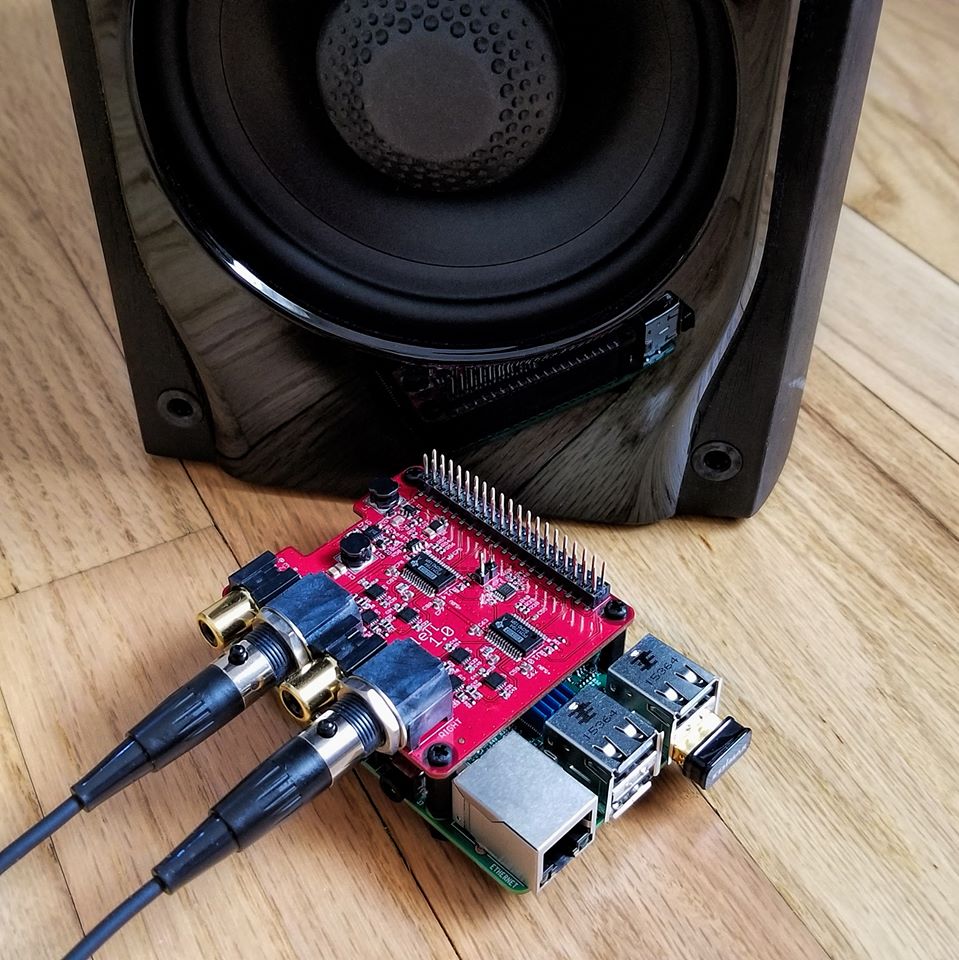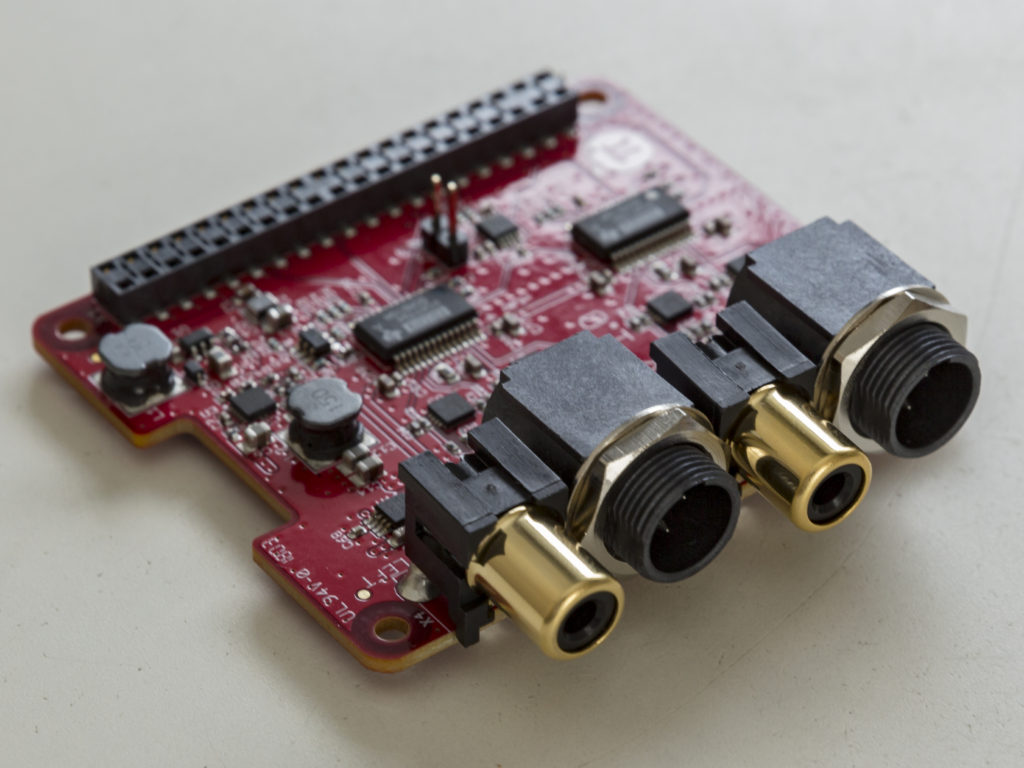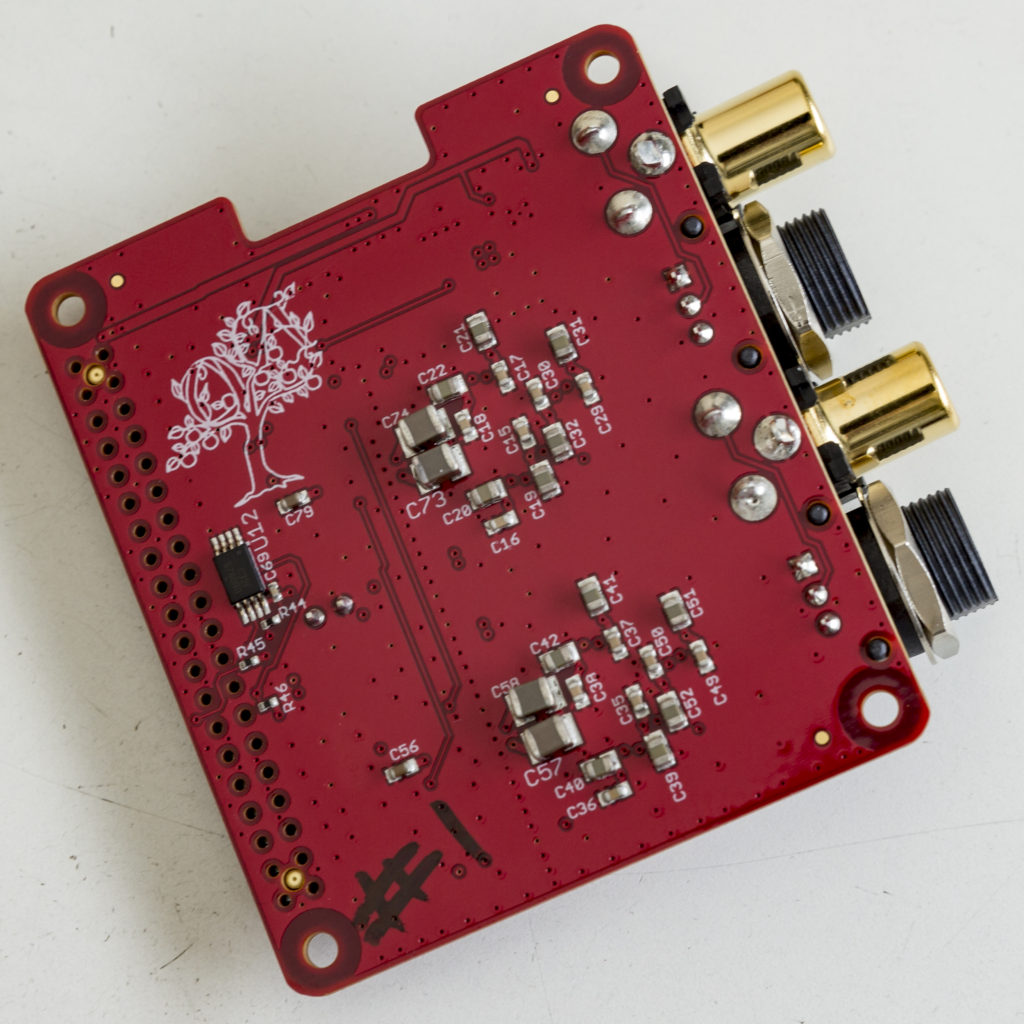
Adam LaBarge, Reviewer
In the audio world, the RaspberryPi computer is a go-to device to combine with a high definition DAC, like the new ApplePi DAC (retail $200, Kickstarter campaign $175) from Orchard Audio, for making one’s own media center and streaming high-definition digital audio. I have always been interested in the little RaspberryPi computers. They look like real fun, and people are making innovative things with them; like smart home devices such as smart mirrors or ways to recognize and follow your movement around your house to adjust the thermostat or stream music and video to specific rooms. These devices can be used along with facial recognition devices and of course, robots. All of these things are awesome!
Remembering back to my years in college, sharing an apartment with four other guys, I would have loved to have had one of these instead of the bulky PII desktop, massive CRT monitor and huge, wired keyboard, we barely had tucked away under a corner table. And we were lucky when we finally got a SoundBlaster 16 DAC instead of the using the 1/8th headphone jack off the motherboard. Fast forward 20 years now and all of that can come in a shoe box sized package, where you can interact with it via touchscreen, smartphone, or over a network, and the new DACs are so much better.
About the ApplePi DAC
If you are like me, most of your interactions with computer audio have been with a DAC connected to your computer via a USB port that is plug and play ready and everything, usually, just magically works. But that isn’t how the ApplePi DAC is used. It is purpose built, in that it is meant only to be used with a RaspberryPi (or Tinker Board or Sparky SBC) computer via a pinned connection and it only supports the VolumIO, Rune Audio, and MoOde audio software. But more importantly, it is purpose-built to be the best sounding DAC one can pair with a RaspberryPi. The specs of the ApplePi DAC out perform leading competitors, and it comes with both single-ended RCA plugs or a fully-balanced mini XLR. Using Dual TI Burr-Brown DAC (PCM1794A) chips in monaural mode, with ultra-low noise linear regulation and low jitter PLL clock, the ApplePi DAC has an SNR of 128dB (2,510,000 to 1) and a Total Harmonic Distortion + Noise (THD+N) of 0.0005%. The DAC supports these sample rates – 44.1, 48, 88.2, 96, 176.4 and 192kHz, and supports 16-Bit and 24-Bit bit rates and a dynamic range of >135dB.

You may have read the press release last September on the launch of Orchard Audio. If not, then let me introduce Leonid (Leo) Ayzenshtat. He is the engineer behind the ApplePi DAC and the award winning Digital Amplifier Company’s DAC DAC. Based out of New Jersey, he is like a smarter version than most of us. He’s just a guy who wanted a better sounding media center and didn’t want to pay thousands of dollars for it. So over 6 months, he created the ApplePi DAC and is now looking to kick start a company around it, with plans to take the great sound of the ApplePi DAC and make a DAC that can be USB plug and play with a Mac or Windows OS computer and/or an 8-channel surround sound DAC with the same chipset. Though, the less than $250 price point for a RaspberryPi + ApplePi DAC and its great sound makes it extremely compelling.
Reviewing the ApplePi DAC
For this review I used the RaspberryPi + ApplePi DAC as the source and toggled between the Pass Labs HPA-1 and Burson HA-1 headphone amplifiers and the Audeze LCD-2 or AKG K701 or ESS 252 headphones. All audio was high def FLAC files with 48kHz/24bit or better.
Ok, specs are great and all, but how did it really sound? Frankly, very good, surprisingly good. The music was full-bodied, and the bass was particularly impressive, not bloated or slow, but fast and detailed, and punchy with rock and electronic music and engaging with soul and funk. The high end was detailed and didn’t come across as rolled off in any way, but it also was not fatiguing, and I was able to listen to music for several hours on end. The mid-range and truthiness of the music rivaled that of the other DACs I have on hand that cost significantly more. (To be fair, a lot of money for these other DACs goes into either ease of use and compatibilities.) The ApplePi DAC was always emotionally engaging without being nostalgic or too aggressive. It sounded fun and fast with rock, metal and general hysteria-inducing music, smooth without being sultry with soul and funk and open with jazz.

As for staging and positioning of sounds in the music, I liked the fact that the ApplePi DAC didn’t let far left or right panned instruments seem far off and down an echoey hallway, disembodied from the rest of the music. This positioning is particularly noticeable when using headphones and listening to older recordings. A guitar solo or drum track just seems to displace itself way out from the rest of the music when panned hard to a side, and the ApplePi held that particular aspect of older recordings in check while not over collapsing the soundstage and making it sound too small or with sounds stepping on each other. I think for most of the music I listen to this is great, but I could maybe see this being an issue with more open air recordings or live symphony recordings where part of the attraction to the music is the grand scale of the room where it is recorded.
So would I recommend the ApplePi DAC? Yes, without a doubt. I think Leo has done a great job with this DAC. You know, if you are like me, not an electrical engineer, then hearing that such and such DAC uses so and so chipset from this or that company can make it sound like there is no art involved in designing a DAC. I was mistakenly under this impression. But this is not the case. I asked Leo where his musical tastes comes into the design of this DAC. Since the chip is from Burr Brown and the other components by other companies, is he just aligning pieces on a board, and couldn’t anyone do that? The answer is no. The art of the ApplePi DAC is getting the right power and circuitry packed into such a small space while maintaining fantastic sound. Much of this is experimenting with different power options, filtering the power, different clock settings and determining how to get the sound performance of a larger DAC unit from such a small device. So while I don’t fully understand the details, there is art in this DAC, and it shows.
